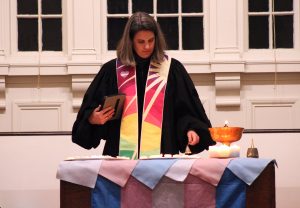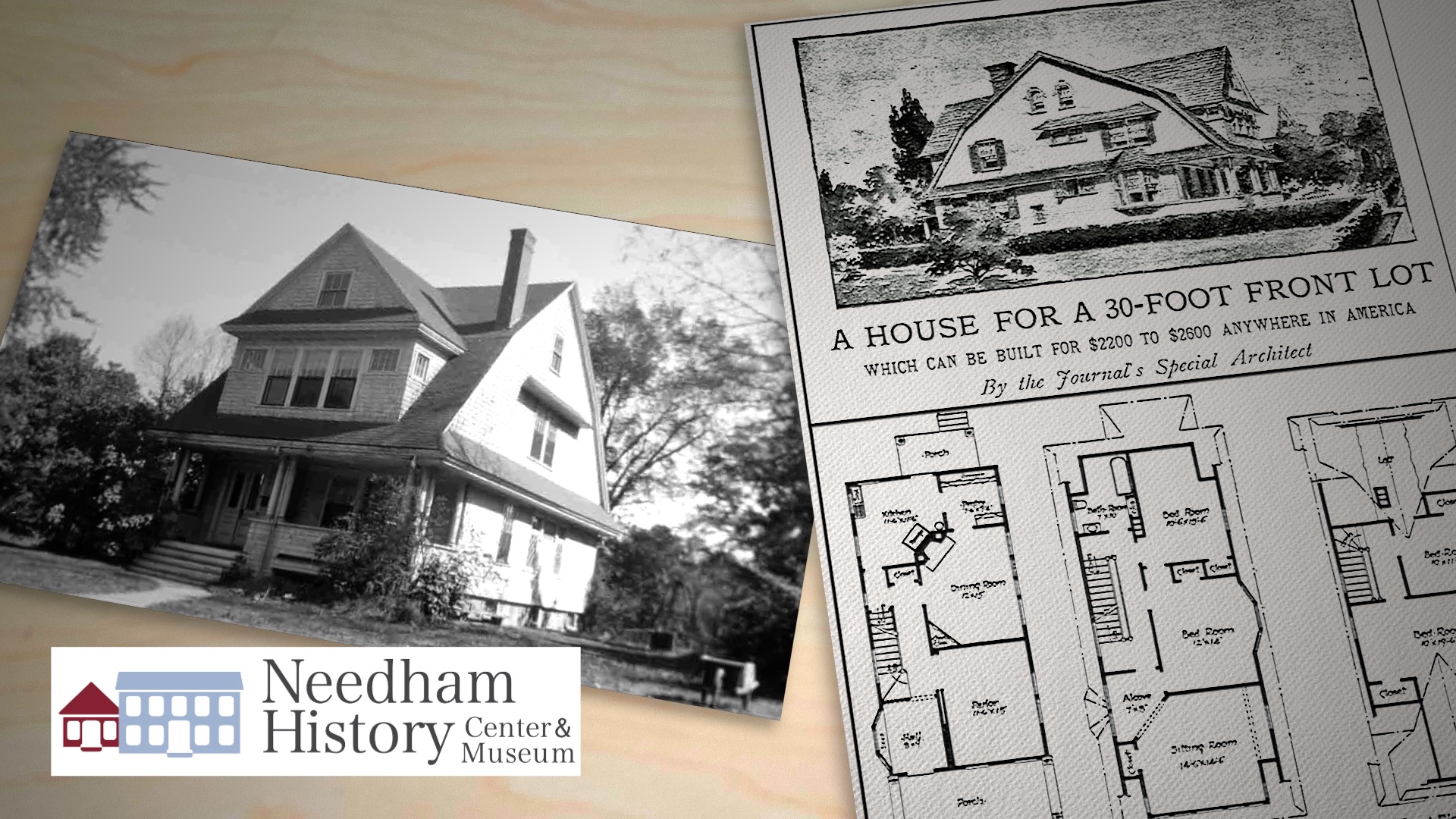
Needham History: Louis Holman’s House
Others would come later. First, there was Needham.
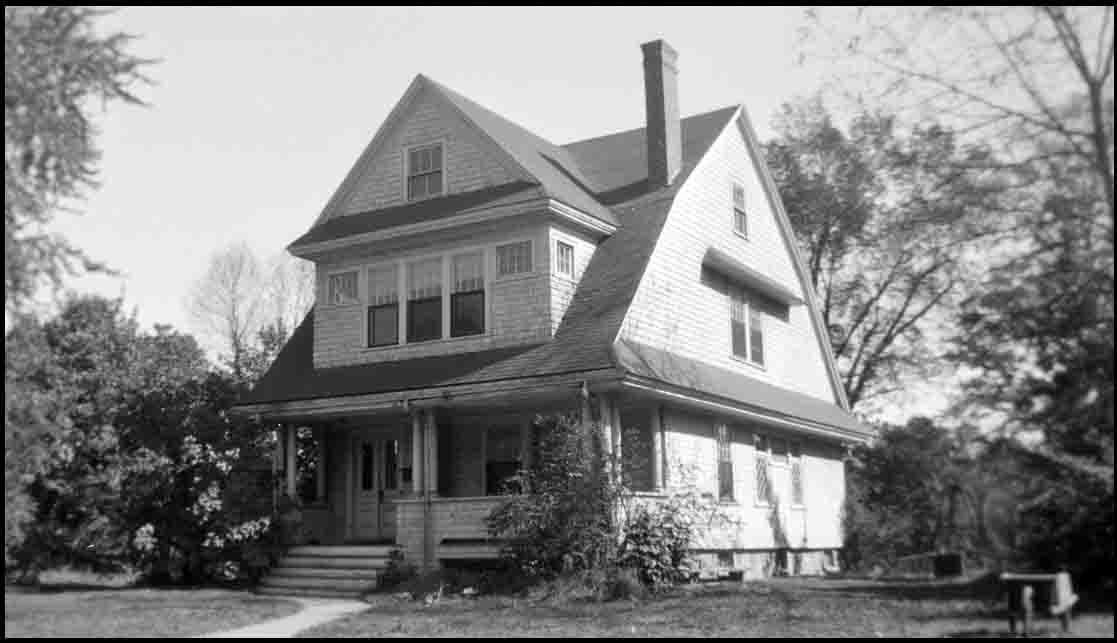 The Holman house at 20 Oakland Avenue, circa 1950. Windows on the right façade differ slightly from the left as shown in the rendering (below).
The Holman house at 20 Oakland Avenue, circa 1950. Windows on the right façade differ slightly from the left as shown in the rendering (below).
Louis Holman’s House
All roads lead to Needham. I am always delighted when an unexpected connection pops up that links Needham to some place or person that I had not considered to be of “local” interest. Such as the Louis Holman house.
Louis Arthur Holman (1866-1939) was an artist, editor, and print and book dealer. He was born in Prince Edward Island, Canada in 1866, and began his career in bookselling and publishing in Canada. He moved to Boston in 1889 to study art at the Cowles Art School. He later became editor of several illustrated magazines, also contributing his own articles and illustrations to these publications. In 1915 he opened a Prints department at Goodspeed’s Book Shop on Beacon Street in Boston, and about fifteen years later opened his own shop, Holman’s Print Shop nearby on Park Street. Holman’s son Richard ran the shop after Holman’s death, and it remained in business until 1977.
Holman was also the author of several books about other artists, especially about etchings by classical and modern artists such as Rembrandt, Dürer, George C. Wales and Arthur Heintzelman; and about antique maps and mapmakers. He also illustrated M.A. DeWolfe Howe’s Boston: the Place and the People (1903), among others. Holman was also an expert on the English poet John Keats, and maintained a large collection of Keats materials which he exhibited in the US and Europe. For many years, he was also the art director for Youth’s Companion, a magazine for children that was published in Boston.
Around 1897, Holman moved to Needham, where he lived for the rest of his life. In Needham, he volunteered for a number of organizations that served youngsters, including the Boy’s League of the First Baptist Church, and the Young People’s Association, an athletic club. In 1911 Holman was appointed to the Committee for the Town’s History, which planned the town’s bicentennial celebrations, and which incorporated a few years later into the Needham Historical Society.
When Holman moved to Needham, he also built himself a house, which was completed in 1898. He purchased a plot of land on Oakland Avenue from John Moseley and the plans for “House #2” from the Ladies’ Home Journal. From 1897 to 1899, the LHJ published a series of house plans under the title “Modern Homes at Moderate Cost.” For just $5, you could purchase the plans for one of seven houses “to be built at moderate cost anywhere in America.” The plans aimed to “supply the want felt by people having modest means yet desiring artistic homes.” The homes could be built for roughly $1000-2500. The plans were designed by “the Journal’s Special Architect” – not named, but described as “a celebrated architect, exclusively engaged by the Journal for this work. The architect employed is the most skillful originator of modest-cost houses in America, and these plans represent the careful study of years.”
An illustration by Louis Holman of the Old Corner Bookstore, for M. deWolfe Howe’s Boston: the Place and the People (1903)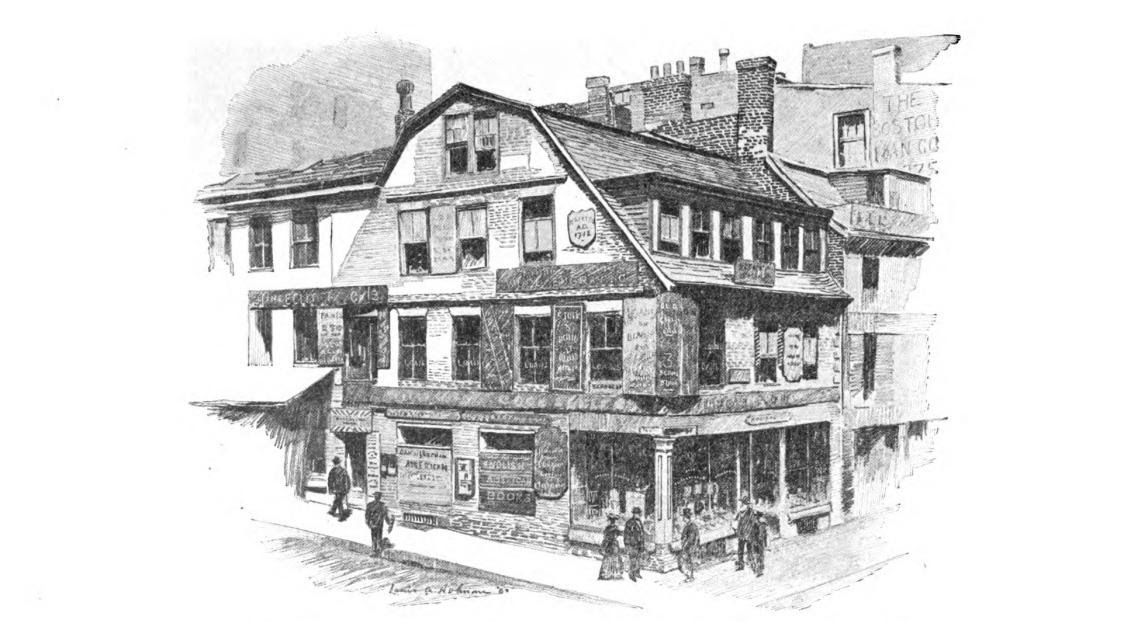
House #2 was described as a house that could be built on a lot with narrow frontage – “a problem constantly presented in these days of high land values.” To conform to the presumed narrow lot, the house had a narrow front façade, and its main axis extended to the rear. The entry hallway led into a sitting room, with a dining room behind that, and the kitchen and pantry in the back. The second floor had two bedrooms and a full bathroom, and an additional sitting room. The third floor also had two bedrooms and some additional storage space under the eaves. There were porches in the front and rear. Although simple, the house was not spartan, and there were interior design flourishes, like arched doorways and window seats. It was estimated that, barring decorative finishes like paint and wallpaper (“matters altogether dependent upon personal taste”) that the house could be built for $2200-2600. This included a cement cellar floor, electricity, gas, and “first-class” fixtures and appliances.
The designer also went on to opine about colors and finishes (though grudgingly admitting that the homeowner should consult his own taste here) – the exterior colors should be a muted yellow or ivory for the lower floor, and gray for the upper stories and roof to blend into the background (“Do not try to have your house different from every other house in color; this ambition has ruined many an attractive village.”) Interior trim should be plain or a muted green stain on the first floor and plain white on the upper floors. Hardwood flooring was not included in the estimate, as the architect considered them to be too high-maintenance for a household without servants.
The Ladies’ Home Journal never identified their Special Architect. Probably no one thought any more about it for decades. However, the September 1957 issue of House and Home Magazine, had an article about the development of American domestic architecture. Commenting on the past excesses of the Queen Anne style (“The Ladies’ Home Journal, launching its still continuing crusade for better homes, called these houses “repellently ornate” … and attacked with special vigor their useless turrets, filigree work, machine-turned ornaments, extravagant parlors…”), House and Home casually dropped the information in a footnote that “As an antidote, the Journal commissioned a young architect named Frank Lloyd Wright to design a series of houses…”
In 1897, Frank Lloyd Wright was just starting out. He was 28 years old, and had opened his office just a few years before. So, not quite yet a “celebrated architect” whose “plans represent the careful study of years.” None of the seven houses that he designed for the Journal between 1897 and 1899 show any of the design characteristics that would become Wright’s iconic style. They are pretty standard designs – attractive, but not ground-breaking.
Interestingly, Wright would maintain the relationship with the Ladies’ Home Journal for several years more, but by 1901 the designs were published under his own name. His two articles in February and July of that year – “A Home in a Prairie Town,” and “A Small House with Lots of Room in It” – are considered to be the first expressions of what would become known as his Prairie Style. The two designs became a standard model for the Prairie-Style house, on which he would elaborate and expand over the years. A final design for LHJ, in 1907, was for a “fire-proof” house built of poured concrete.
Louis Holman’s house is still standing, at 20 Oakland Avenue. A review of the house for the Needham Historical Commission in the 1980s confirmed that it conforms to the published plans and elevation of LHJ’s House #2, with some minor adaptations. The house is included in the Needham Inventory of Historic Assets for its distinguished architectural pedigree – even if that pedigree was not obvious at first glance. Taliesin and Robey and Fallingwater would came later – but first, there was Needham.
The rendering and floor plan for House #2, published in the Ladies Home Journal in 1897. The view shows the long left-side façade of the house, with the front porch facing the street to the right.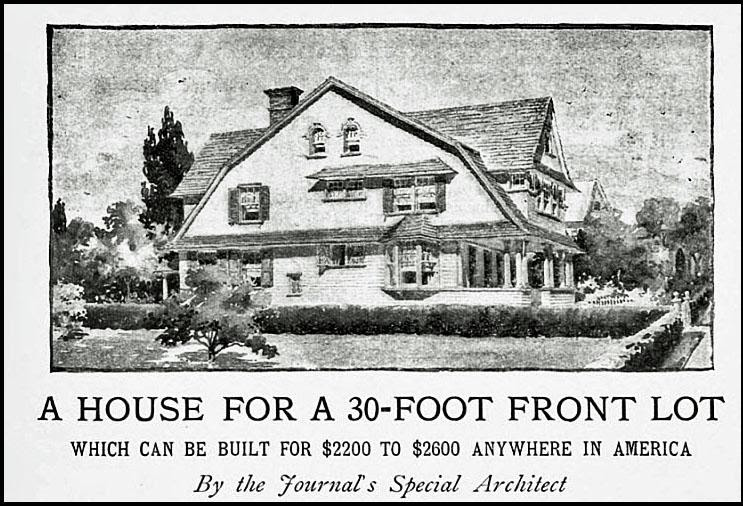
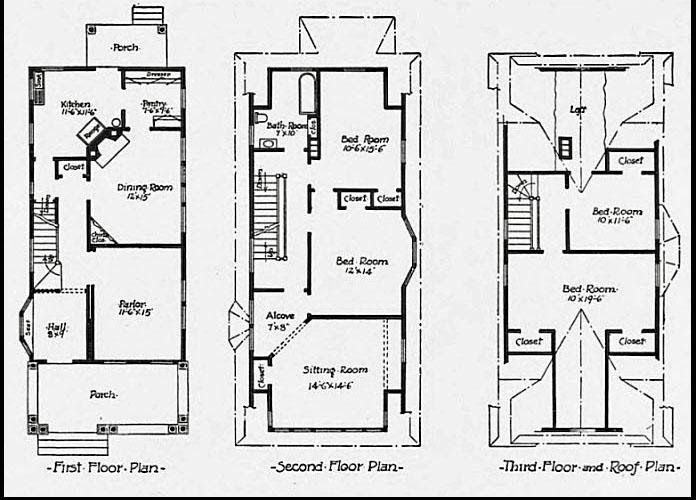
 |
Gloria Polizzotti Greis is the Executive Director of the Needham History Center & Museum. For more information, please see their website at www.needhamhistory.org. |

